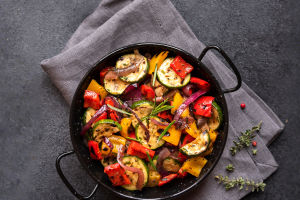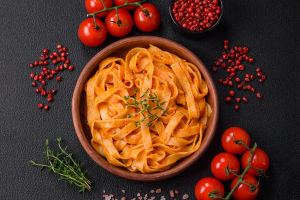Hype or Healing?
From avocado toast to açai bowls, "superfoods" have taken over grocery store shelves, Instagram feeds, and wellness blogs. But what exactly makes a food "super"? And more importantly—should you believe the hype?
Let's take a closer look at the idea of superfood plants, peel back the marketing, and figure out what's genuinely helpful and what's just a sales pitch.
Where Did "Superfood" Come From?
The term "superfood" isn't rooted in science—it's rooted in advertising. According to dietitian and nutrition researcher Dr. Marion Nestle, "superfood" is a marketing term with no official definition. That means any food can technically be called a superfood, regardless of whether there's enough evidence to back up its supposed benefits.
It first appeared in the early 20th century to promote bananas. Since then, marketers have used it to describe berries, seeds, seaweed, and even algae—foods said to be loaded with nutrients, antioxidants, and disease-fighting powers.
But labeling something a "superfood" can create the illusion that it's a magical cure-all, which often distracts from the bigger picture: long-term dietary habits.
The Truth Behind Nutrient Density
Not all "superfoods" are bogus—but the real power lies in nutrient density, not the label.
Take these examples:
1. Blueberries – High in vitamin C and antioxidants, especially anthocyanins. These compounds help reduce oxidative stress, which is linked to aging and chronic disease.
2. Kale – Packed with fiber, vitamin K, calcium, and phytonutrients. It's a solid choice, especially if you sauté it lightly or add it raw to salads.
3. Chia seeds – Rich in omega-3 fatty acids, fiber, and protein. They support gut health and help keep you full longer.
These are genuinely beneficial foods. But calling them "super" without context can be misleading.
It's the Pattern That Matters
One serving of dried cranberries won't make you healthier if the rest of your diet is ultra-processed. Dr. David Katz, a preventive medicine specialist, emphasizes this point: "No single food is the key to health. It's the overall dietary pattern that makes the difference."
This means:
• Add, don't obsess. Superfood plants like spinach or chia seeds are great additions—but they're not replacements for balanced meals.
• Mix it up. The healthiest diets are diverse. Don't just eat quinoa every day because it's trendy—rotate grains, vegetables, and proteins.
• Watch the sugar. Many "superfood" products like açai bowls or smoothies come loaded with added sugar, which cancels out many of their health benefits.
The Price of the Superfood Label
Many so-called superfoods come with inflated prices. A small bag of dried cranberries or spirulina powder can cost five times more than a head of broccoli or a bag of oats, even though the latter may offer just as much nutrition.
In fact, many everyday vegetables—like red cabbage, carrots, and beans—are just as nutrient-rich but rarely make the "superfood" list. Why? Because they're not exotic, trendy, or easy to market.
If budget matters (and it does for most people), skip the $15 powders and focus on local, fresh, colorful plants. They offer real nutritional value without the super price tag.
When Superfood Thinking Turns Risky
Believing too much in the "super" status can lead people to overconsume certain foods—or worse, ignore medical advice. For example:
• Relying solely on green smoothies could leave you deficient in other essential nutrients.
• People on medications should be cautious: grapefruit, for instance, can interfere with how certain drugs work.
Always check with a medical professional before adding large amounts of a new "miracle food" to your routine—especially if you have an underlying health condition.
So—Are Superfoods Worth It?
Yes, but only when you see them as part of a bigger whole. Eating chia seeds in your yogurt? Great. Swapping white rice for quinoa? Excellent. But expecting açai powder to detox your entire system? That's just marketing.
To truly benefit from nutrient-rich plants:
1. Eat the rainbow – The more colors on your plate, the wider the range of nutrients.
2. Look beyond the label – Ask: Is this food nutrient-dense and affordable?
3. Stay skeptical of trends – Health fads change quickly. A healthy habit is one you can maintain for years.
Final Thought: It's Not One Food—It's the Fork
Next time you're tempted by a pricey "superfood" blend or the latest trend on social media, take a breath. Ask yourself: Do I already eat a variety of real, whole foods? If so, you're probably already doing better than most.
There's nothing wrong with enjoying chia pudding or sprinkling flaxseed on your cereal—but don't let buzzwords distract you from the bigger truth: real health comes from consistent, balanced eating, not a miracle ingredient.
What's your take on superfoods? Have you ever tried one that lived up to the hype—or felt like a waste of money?
Contact to : xyjph123@gmail.com
Privacy Agreement
Copyright © boyuanhulian 2020 - 2022. All Right Reserved.
Privacy Agreement
Copyright © boyuanhulian 2020 - 2022. All Right Reserved.


